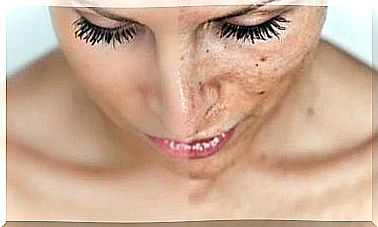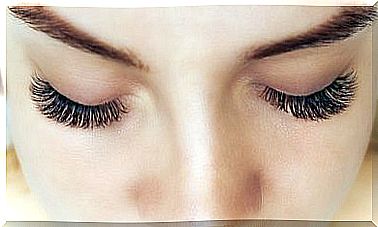Macular Hole: Symptoms And Treatment
The macular hole is a disease of the eye that, as its name indicates, affects the macula. This is the central and most important portion of the retina, as it gives us the necessary visual ability to read, drive and see the environment in detail. As you can imagine, an injury there causes a decrease in visual acuity in the patient.
As indicated by works from the Faculty of Sciences of Alicante, the macular hole is much more common after 60 years of life and affects 3 out of every 1000 inhabitants. It presents a clear gender bias, as it is more common in women than in men, in a ratio of 3 to 1.
What is the macular hole?
According to the University of Navarra Clinic (CUN), the macular hole is medically defined as a small circular opening in the macula of the eye. The macula is the central area of the retina, a light-sensitive tissue that captures light stimuli and perceives the images that will be sent to the brain.
While the macular hole is a common injury, the degeneration of the macula can occur naturally with age, presenting very similar symptoms in the patient, as we will see in later lines.
The stages that characterize the macular hole are the following:
- First degree: the fovea is the depression in the center of the macula. At this stage, a detachment of the foveal area of the retina occurs, but without forming a complete retinal foramen. Without treatment, half of these conditions will progress.
- Second degree: a small, complete retinal hole is detected in the fovea area. Without treatment, approximately 70% of the pictures will progress.
- Third degree: there is an increase in the size of the hole, from 400 microns.
- Fourth degree: the vitreous humor is the gelatin found inside the eye. In this phase, the macular hole is associated with a posterior vitreous detachment.
As you can imagine, the symptoms will vary depending on the severity of the condition. The size of the hole and its position on the retina determine how much the patient’s visual ability will be impaired.
Why is it produced?
According to the aforementioned portals, there are 2 types of macular hole based on the etiology of the lesion. We will tell you briefly in the following lines.
1. Idiopathic macular hole
It is also called senile , because it affects patients between 50 and 70 years of age, with normal refractive errors (or without them) and without associated systemic pathologies. The vitreous humor becomes disorganized and contracts with age. Therefore, this modification can cause a traction on the macula that ends up forming the lesion.
As indicated by the National Eye Institute (NIH), up to 15% of patients who develop an idiopathic macular hole are at risk of developing it in the other eye over time.
2. Secondary macular hole
Macular holes can also appear as a secondary consequence of a previous pathology. For example, a patient with severe myopia or who has suffered an ocular trauma, a retinal detachment or who has developed a cystic macular edema is at greater risk of suffering this type of injury.
However, only 1 to 9% of blunt eye traumas end up causing a traumatic macular hole (TMA). In young people they can close on their own.
Macular hole symptoms
The American Society of Retine Specialists (ASRS) shows us some of the most common clinical signs that appear in conjunction with a macular hole. In most cases (unless they are the cause of direct trauma), they appear gradually, so the patient will gradually notice blurred vision.
In addition to this difficulty in seeing, some will perceive that the straight lines that make up the objects begin to bend . The types of distorted vision covered here are called metamorphopsies and, in addition, dark areas may appear in the field of vision (scotomas).
How is a macular hole diagnosed?
The first step in detecting a macular hole is to see an ophthalmologist as soon as possible. This will deliver special drops in the affected eye that will dilate the pupil and allow the professional to inspect the structure. After this, optical coherence tomography (OCT) methods are used.
OCT is based on optical coherence interferometry to obtain tomographic images of the patient’s ocular fundus tissue. It is very similar to an ultrasound, only in this case light is used instead of sound waves to map the internal parts of the eye.
Treatment
The American Academy of Ophthalmology (AAO) shows us the general treatment for a macular hole. In any case, this depends a lot on the progression of the injury and its place of appearance.
In stages 2 to 4, treatment is surgical. A vitrectomy is used, or what is the same, a surgery that is performed to remove the vitreous humor that is causing the protrusion of the ocular macula. This procedure is performed under local outpatient anesthesia and the following instruments are used:
- A fiber optic light to illuminate the retina.
- An irrigation cannula to maintain intraocular pressure.
- An instrument that cuts and removes excess vitreous gel.
This procedure is very minimally invasive, since it is carried out through a series of very small strategic incisions. After removing the excess vitreous humor, the surgeon places a kind of gas bubble that allows the macula to remain in place and stabilize while the eye heals.
Risks and postoperative
According to the Institute of Ocular Microsurgery (IMO), there is a 15% chance that the macular hole will reopen over time. In addition to this, patients should keep the following points in mind if they are going to undergo surgery:
- It is very possible that the eye will hurt after the operation. Short-term medication administration may be necessary.
- The face must be kept in the same position for a time interval of up to a week or more, in order for the gas bubble to remain in place. Therefore, you cannot lead a normal life.
- You cannot take airplanes or climb mountains until the gas bubble has dissolved. Any activity that modifies intraocular pressure can put the result of the operation at risk.
In addition to all these considerations, it is necessary to bear in mind that healing is gradual, since the macular hole does not close suddenly.
The percentage of vision that the patient will recover depends on the size of the lesion and the time interval that it was present, but the operation does not have to fix the vision 100%.
It is not serious, but the recovery is slow
As you may have seen, the macular hole is not a serious clinical condition, but the recovery process after surgery is quite slow and cumbersome. The simple fact that the patient must keep the head in the same position for more than 7 days is already remarkable in itself.
Therefore, before undergoing surgery to resolve the macular hole, you should plan your activities well and notify your environment. Anyway, don’t let time pass more than necessary.









